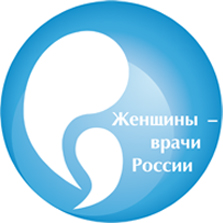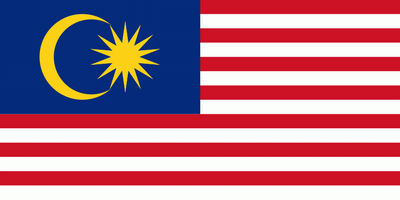
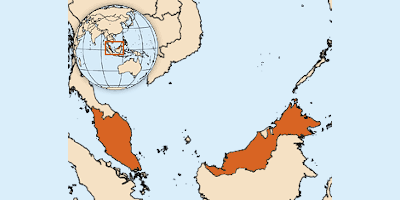
Malaysia
* State borders indicated on the map are approximate
1. Statistics (WHO, latest data from the Global Health Observatory)
Total population (2016) 31,187,000
Gross national product per capita (in international PPP dollars, 2013) 22,460
Life expectancy at birth m / f (years, 2016)
Probability of dying (per 1,000 live births, 2018) before age five: 8
Probability of death at the age of 15-60 m / f (per 1,000 people, 2016) 156/86
Total health expenditure per capita (I $, 2014) 1,040
Total health expenditure as% of GNP (2014) 4.2
2. General information about the country
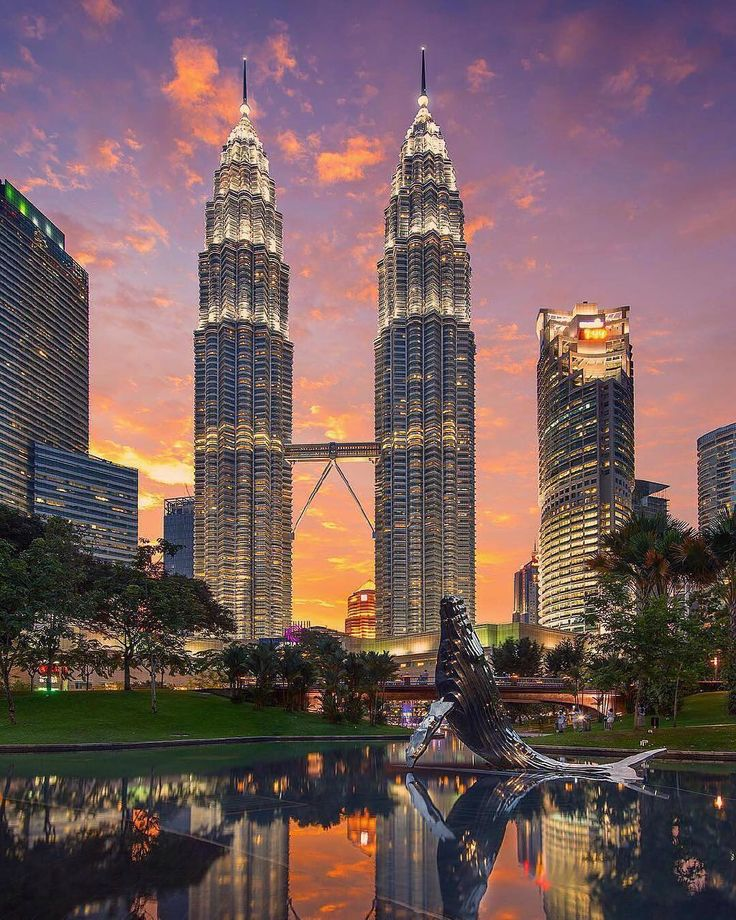
The self-image of the nature and profile of Malaysia is largely determined by its location in two separated territories, divided by the South China Sea of the Pacific Ocean.
The country takes a leading place in the world in the extraction and reserves of tin after China and Brazil, and are also known as the place of the ore of manganese, tungsten, mercury, antimony, zirconium, tantalum and niobium, REE; apatit, bara, lithium, spat, mica, doughs, limes, clays (including kaolin), sands (including quartz) and gravel.
Most of the territory of Malaysia (the south of the Malak Peninsula and the Kalimantan island) is located in the area of the equatorial humid climate. The average monthly air temperatures changes during the year are not significant, 25-27 ° C on the flats.
The renewable water resources of Malaysia are 580 km3 per year, the water supply is 23.9 thousand m3 / person per year (2002) - one of the highest in Asia.
Population: Malaysians (49.0% of the country's population, 2008) live everywhere, but the main areas are located in the north-east, south, and also along the north-western coast of the Ma peninsula varnish. Dayaks of the Kalimantan island make up 7.9% (including Ibans - 3.0%, Kadazans - 1.8%). Orang-lauts (about 1%) live mainly in the coastal areas of the state of Sabah. Small indigenous peoples of the interior regions of the Malakka Peninsula (asli) count about 0.5%. Chinese (22.4% of the population) are predominantly located in the cities of the western part of the Malak Peninsula (in the states of Selangor, Perak, Jokhor, Malak and others). Immigrants from South Asia (mainly India and Sri Lanka; 6.7% of the population, of which about 4/5 are tamils, the rest some - Malayals, Telegu, Kannara, Pendzhabts, Bengals and others) live mainly in the west of the Malak Peninsula. In Malaysia, there are also Javanese, Sulu, Thais and others.
3. Healthcare of Malaysia
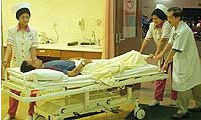
Malaysia's healthcare system is decentralized, including the public and private sectors, nongovernmental organizations, and the institution of traditional healers.
Control over the organization and financing of medical care is carried out by the Ministry of Health.
Each state in Malaysia has public hospitals and clinics, while each city in the state has one main public hospital, and there are public hospitals and clinics in every area of the city that provide medical care to the population under the supervision of this main public hospital in the state. The hospitals have their own ambulance service.
Each public hospital is headed by a director who submits activity reports to the Ministry of Health.
Also, each state has maternity hospitals, neuropsychiatric and tuberculosis dispensaries.
Public hospitals provide free health care for children under 12, government employees and retirees, while other categories of services are provided at minimal cost.
The private health sector in Malaysia is also represented by a significant number of hospitals and clinics providing basic medical care to the population throughout the day.
The cost of medical services in private hospitals is much more expensive than in public ones.
To open a private practice, doctors in Malaysia are required to have the necessary length of service in public hospitals, therefore the level of qualification of doctors in them is high. All private hospitals are licensed by the country's Ministry of Health, MS ISO 9002 and Malaysia Health Quality Standard (MSQH).
Malaysia also has a small number of "parastatal" hospitals, where the population can receive the same medical services as private clinics, but much cheaper.
Some medical clinics have a wide range of services, others specialize in a specific type of service.
The main goal of the Ministry of Health of Malaysia is to provide the necessary medical services to the population, upbringing a healthy generation, in connection with which the country is supposed to introduce a national system of fear. importance of health.
Malaysia's climate is responsible for many infectious diseases, including tropical fever. The most common somatic diseases in Malaysia are: diabetes, cardiovascular diseases, chest cancer, asthma, allergic diseases, etc.
4. Prevention system in Malaysia
Disease prevention in the health care system of Malaysia pays great attention and a special role in it is played by the natural resources of Malaysia: hot springs, mild climate, fresh air. Well-known healing springs are found on Tambun, in Kulim on the Malacca Peninsula, Pedas, etc.
As preventive and rehabilitation technologies in Malaysia are used: thermo-baths, dietary supplements, medicinal herbs and infusions, oils, spiritual health restoration systems, etc., so this component of the Malaysian health care system should not be underestimated.
5. Famous public or private clinics in Malaysia
The National Institute of Cardiovascular Diseases and the Tun Hussein Onn Ophthalmology Center are known all over the world, and, for example, the Kuala Lumpur Hospital offers a medical program "medical examination on vacation" for those who want to combine rest with "medical examination" and recovery at the same time.
Text translated by a representative of Russian Medical Women Association Bondarenko Anastasia.
